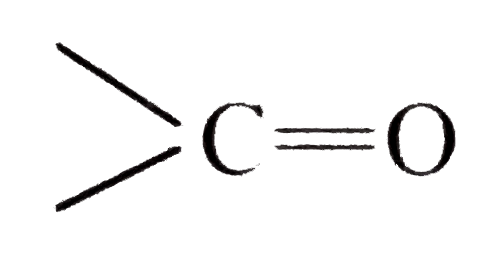(a) Why do acyl chlorides undergo nucleophilic attack more readily than alkyl chlorides ?
(b) What is hydroxamic acid test and which functional group is determined by this test ?
The correct Answer is:A, B, C, D
Step by step video, text & image solution for (a) Why do acyl chlorides undergo nucleophilic attack more readily than alkyl chlorides ? (b) What is hydroxamic acid test and which functional group is determined by this test ? by Chemistry experts to help you in doubts & scoring excellent marks in Class 12 exams.
Topper's Solved these Questions
- BOOK - BANSALCHAPTER - CARBOXYLIC ACID DERIVATIVESEXERCISE - Exercise 239videos
CARBOXYLIC ACID DERIVATIVES
- BOOK - BANSALCHAPTER - ALCOHOL, ETHERS & PHENOL, OXIDATION & REDUCTION EXERCISE - Exercise 328videos
ALCOHOL, ETHERS & PHENOL, OXIDATION & REDUCTION
- BOOK - BANSALCHAPTER - D AND F BLOCK ELEMENTSEXERCISE - EXERCISE-4 (SECTION-B)7videos
D AND F BLOCK ELEMENTS
Similar Questions
Knowledge Check
- Question 1 - Select One
Which of the following amines undergo nucleophilic acylation reactions on treatment with acid chlorides or acid acylation reactions on treatment with acid chlorides or acid anhydrides to form substituted amides ? .
APrimary amines onlyBSecondary amines onlyCPrimary and secondary aminesDPrimary secondary and tertiary amines . - Question 2 - Select One
The Strecker synthesis of α -amino acids begins with the reaction of an aldehyde with ammonium chloride and potassium cyanide. This is followed by an acid-catalyzed hydrolysis, that gives the amino acid. What functional group is hydrolyzed in the second step ?
AAn esterBA nitrileCAn amideDAn imine derivative
Answer the following with reasoning:
(i) Why all the acid derivatives (RCOG) [G may be -X (acid halides), −NH2 (amides), OR' (esters) or -OCOR (anhydrides)] are studied as a unit?
(ii) Why the C-G bond in acid derivatives is expected to be shorter and stronger than in alkyl derivatives (R-G)?
(iii) Why esters have lower boiling points than (a) ketones and (b) acids of comparable molecular masses?
(iv) Amongst the following amides, CH3CONH2,CH3CONHCH3andCH3CON(CH3)2, why acetamide has the highest boiling point and CH3CON(CH3)2 the minimum boiling point?
(v) How the order of reactivity of the acid derivatives is related to the base strength of the leaving groups?
(vi) Why cannot HCl convert RCOOHto RCOCl?
(vii) Why does an acyl chloride undergo nucleophilic attack more rapidly than does an alkyl chloride?
(viii) What is the essential difference between nucleophilic attack on the of an aldehyde or ketone and on an acyl derivative?
of an aldehyde or ketone and on an acyl derivative?
(ix) Why a ketone is not isolated from the reaction of an ester with one equivalent of RMgX?
(x) Amongst the following esters, CH3COOC4H9,CH3COOC3H7,CH3COOCH(CH3)2andCH3COOCH3 : why CH3COOCH3 is most readily hydrolysed with NaOH?
(xi) Why formic anhydride cannot be prepared by heating formic acid?
(xii) Primary and secondary amides exist as dimers in the solid and pure liquid state.
(xiii) Why urea is basic?
(xiv) Why guanidine is a strong monoacid base?
(xv) Why melting point of primary amide is higher than secondary and tertiary amides?View SolutionAllyl chloride is hydrolysed more readily than n-propyl chloride. Why ?
View SolutionAllyl chloride is hydrolysed more readily than n-propyl chloride. Why?
View SolutionAllyl chloride is hydrolysed more readily than n-propyl chloride. Why ?
View SolutionWhat is chromyl chloride test? Why is it so named?
View SolutionWhich of the following statements are correct?
Alkyl chlorides are lighter than water
Tetrachloromethane is heavier than water
Alkyl chlorides undergo nucleophilic substitution more easily than alkyl bromides
Fluorobeznene can be prepared by sandmeyer's reactionView Solution

